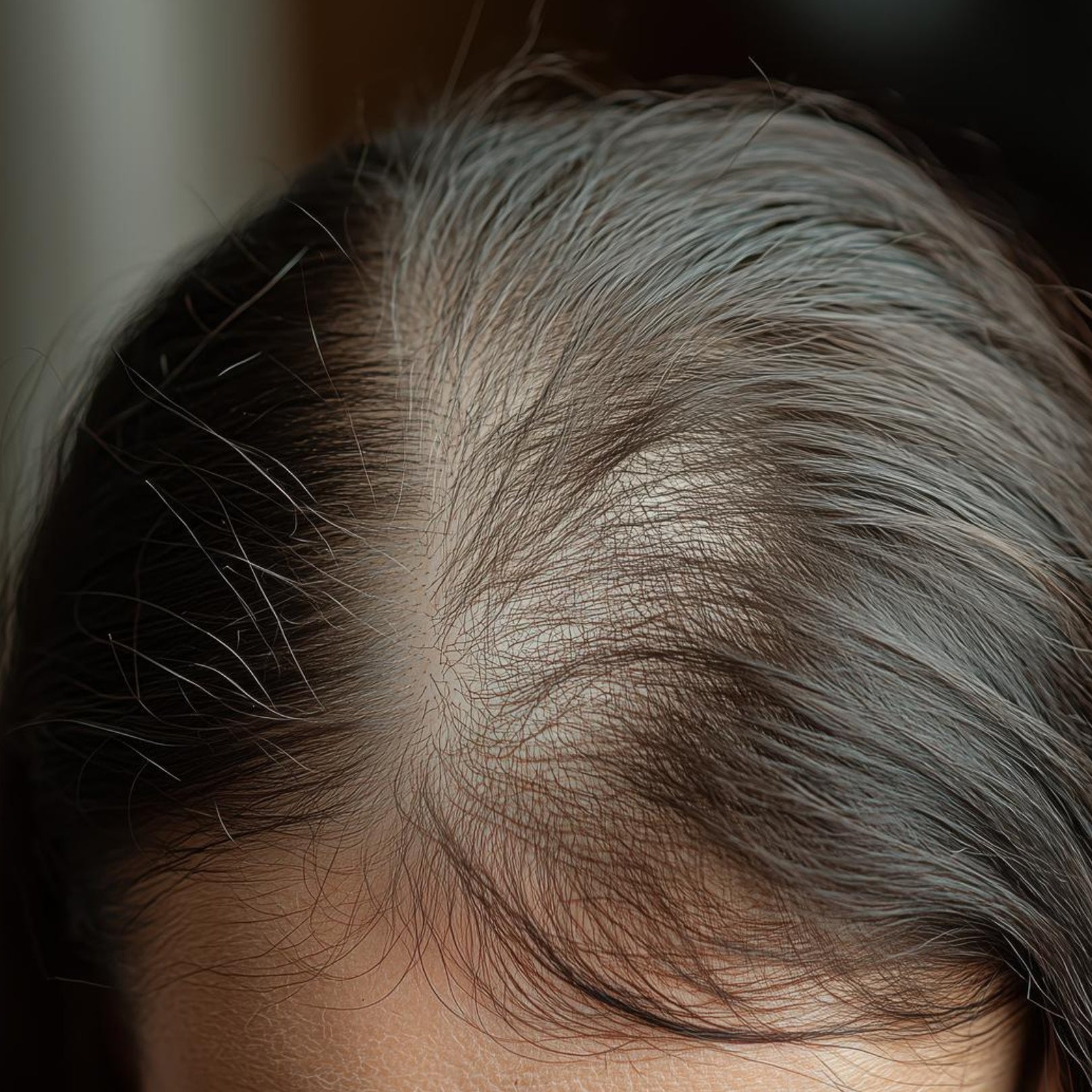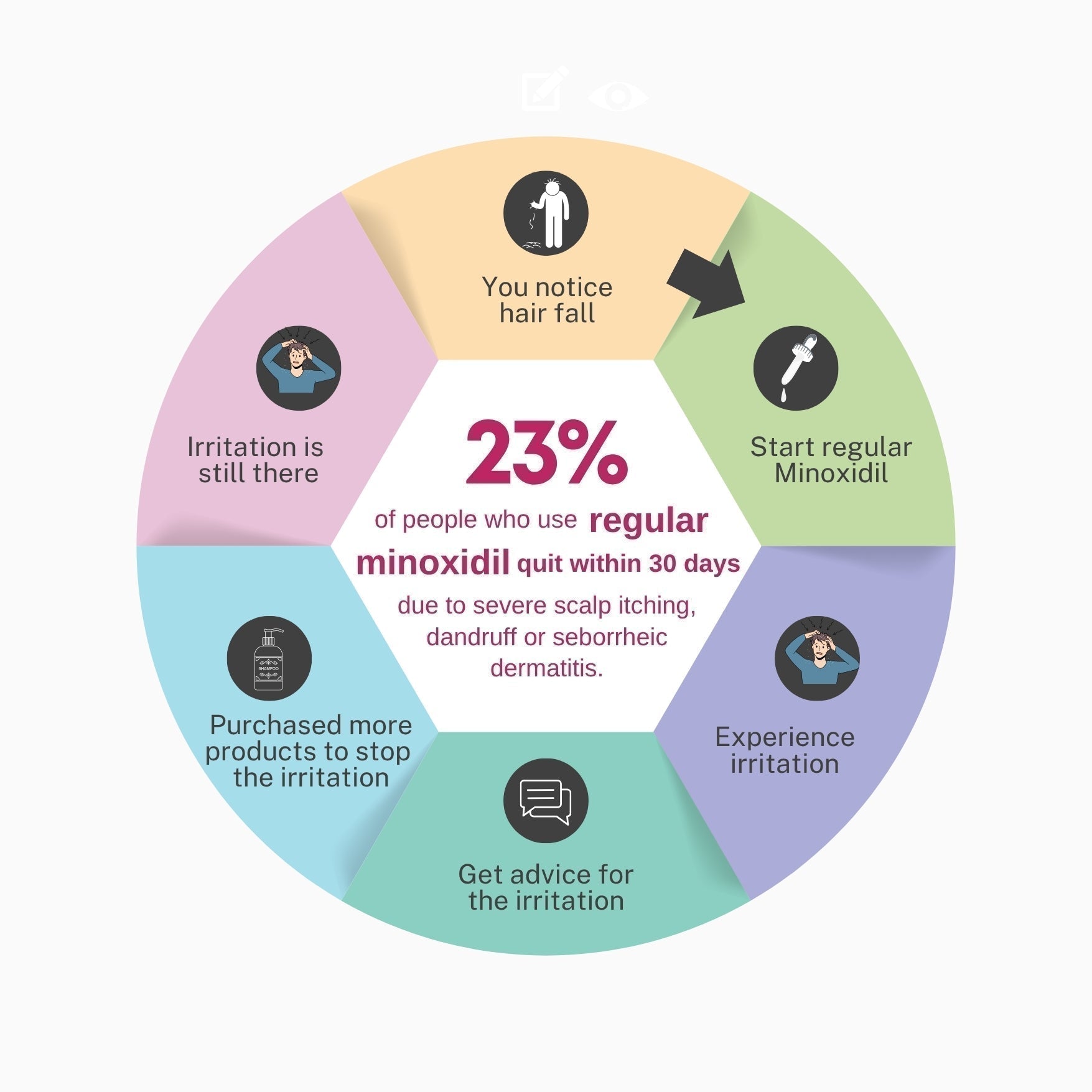why is my hair shedding?
Hair shedding is a completely natural part of the human hair growth cycle. Most people lose between 50 to 100 hairs per day without realising it. While hair shedding is normal, excessive hair loss can sometimes be a sign of an underlying issue. To understand why people shed hair, it's important to explore the hair growth cycle and what the hair strand looks like when it sheds.
Hair shedding with a white bulb
Have you ever noticed that small white bulb at the end of your hair? This white bulb at the end of the hair is called a club hair. When you lose a club hair, it just means you have lost a hair that has completed its growth cycle and it is sitting in the telogen (resting) phase. The white bulb at the end of your hair is essentially a bundle of protein, known as keratin. The role of the white bulb is to anchor the hair follicle to the scalp, allowing the hair to grow until it is shed.
Losing a few strands of hair with a white bulb every day is the natural process of the hair cycle. Losing a handful of hair with a white bulb may indicate early signs of telogen effluvium, an underlying medical condition, stress or hormonal changes. Minoxidil, a common hair loss medication, also pushes more hair into the telogen phase when you first start the treatment. However, minoxidil alters the anagen phase allowing more of your hair to grow. If you recently starting using minoxidil and your hair shedding has a white bulb on the end, don't fret, this is normal and will start to ease off after a few months.
Hair shedding without a white bulb (which indicates the hair has not completed its natural cycle) may indicate other causes of hair loss, such as a nutritional deficiency or another underlying medical condition. Hair breakage indicates weak, brittle hair, which may also be due to nutrient deficiencies or heat styling.

Understanding the hair growth cycle
Anagen phase: The anagen phase is the growth phase and can last two to six years. About 85-90 percent of your hair is in this phase at any given time.
Catagen phase: During this transitional phase, the hair slowly stops growing. The follicle detaches from its nutrient supply — the dermal papilla — and starts moving towards the scalp surface. At the same time, keratin-filled cells clump around the root, forming a club hair, which is a hair with a white bulb at the end.
Telogen phase: The telogen phase (also known as the resting phase). Around five to 15 percent of all scalp hairs are in the telogen stage at any given time. During this phase, the small white bulb at the base of the hair helps hold the hair in place within the follicle until it is shed. For scalp hair, this phase lasts two to three months.
Exogen phase: The exogen phase is when the hair actually sheds from the follicle, often with the white bulb still attached.
Telogen Effluvium - does this have a white bulb?
If you’re shedding an increasing number of hairs with white bulbs at the end, and it feels like sudden hair loss, you may be experiencing telogen effluvium. This condition occurs when more hair than usual enters the telogen phase of the hair cycle, leading to increased shedding over time.
Telogen effluvium can also occur following an emotionally stressful event or after giving birth. You’ll notice the excess hair shedding beginning two to three months after the triggering event, and it typically lasts up to about six months. In contrast, androgenic alopecia or menopausal hair loss can last indefinitely if left untreated.
Symptoms of telogen effluvium
Sudden onset of increased hair shedding: normal hair shedding is typically 50-100 hairs per day, individuals with telogen effluvium may experience two to three times that amount or more.
Increase number of club hairs: If you have telogen effluvium, many of the shed hairs will have a small white bulb at the root (club hairs).
Diffuse hair thinning: Telogen effluvium causes hair to thin evenly across the scalp. You might notice a reduction in hair volume. In contrast, in androgenic alopecia and menopausal hair loss; the hair loss is concentrated along the mid line and crown area respectively.
Treatment for telogen effluvium
Thankfully, telogen effluvium is usually temporary and tends to resolve on its own within six months. Chronic telogen effluvium is a term used to described diffuse hair shedding for six months or more. Chronic telogen effluvium is often associated with a underlying medical condition and should be consulted with a medical provider if you have not done so already.
Consider the underlying cause: Telogen effluvium can be cause by hypothyroidism, pregnancy, severe blood loss, bereavement, stress and nutrient deficiencies.
Nutrition: Protein and iron deficiency can also cause more hair shedding without a white bulb. Other deficiencies to consider are zinc, vitamin D and B12 (especially if you are vegan or vegetarian).
When looking at your iron studies, always check your ferritin levels. Ferritin levels (your iron stores) can be low even though iron levels and haemoglobin levels can look normal. Studies show people with low to near low levels of Ferritin levels (i.e. 30ng/ml) were likely to experience hair shedding. The ideal ferritin level to support healthy hair growth is 70ng/ml, whilst the recommended ferritin range is 15-200ng/ml for women and 30-300ng/ml for men.
What this means is that a man or woman with a ferritin level of 35ng/ml may be within the normal range, but this isn't always the optimal target for long term health. Always keep this in mind when looking at other markers.
Get treatment: If telogen effluvium takes more than six months resolve, this is referred to as chronic telogen effluvium. Chronic telogen effluvium is almost always associated with an underlying cause and should be assessed by a medical professional.
Can I use minoxidil for telogen effluvium?
Minoxidil would only be considered appropriate if telogen effluvium was mixed with androgenic alopecia. Minoxidil pushes most of the hairs into the telogen phase when you start minoxidil treatment. This initial shedding phase can last up to six months.
Acute telogen effluvium takes up to six months to resolve so it doesn't justify the use of topical minoxidil for the treatment of telogen effluvium because you may not need minoxidil as a long term treatment. Don't wait for telogen effluvium to resolve spontaneously and always try to establish the underlying cause in the early stages so that you can implement the appropriate treatment if necessary.
If you have mixed telogen effluvium with androgenic alopecia however, then topical minoxidil may be a consideration. Speak to our pharmacist for a free hair loss assessment and always seek personalised medical advice from your practitioner before making long term health decisions.
References:
- Ali, S et al. (2020). "Serum Ferritin levels and diffuse hair thinning - a correlation." IP Ind J of Clinical and Experimental Dermatology. 6(3):274-276, 2020. | https://doi.org/10.18231/j.ijced.2020.055
- Rasheed, H et al. (2013). "Serum ferritin and vitamin d in female hair loss: do they play a role?" J of Skin Pharmacology and Physiol. 2013;26(2):101-7. doi: 10.1159/000346698. Epub 2013 Feb 20.



